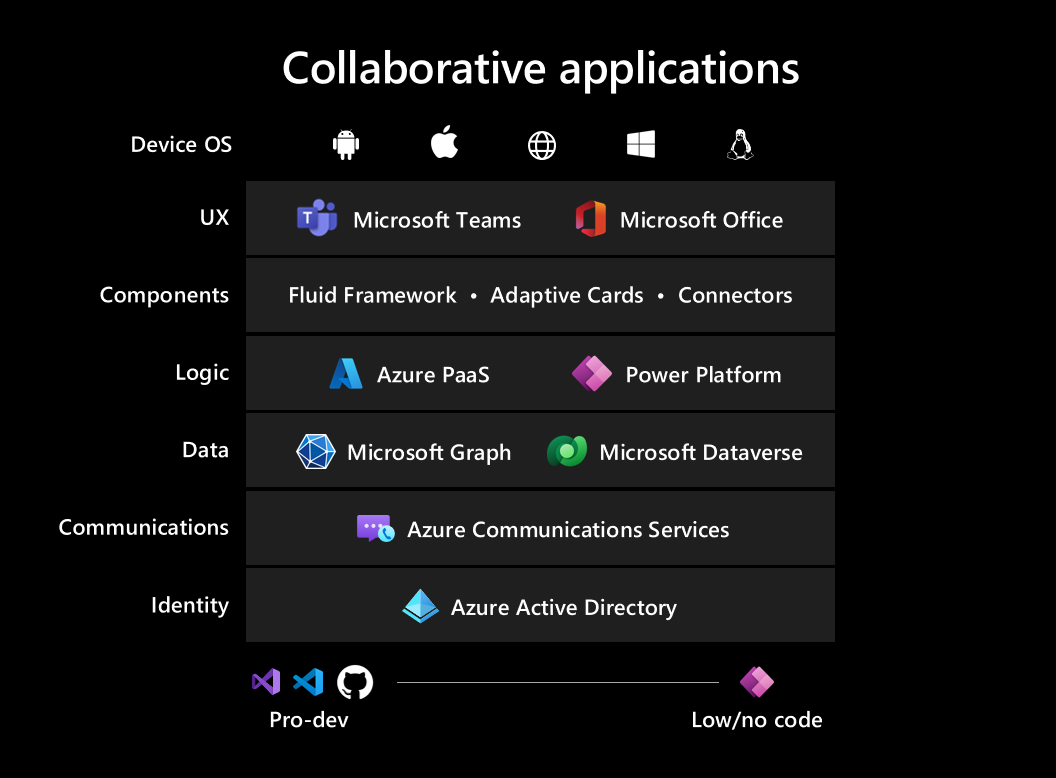Collaborative Applications
A new class of apps designed for hybrid work: collaborative apps
Hybrid, global work requires structural changes to how we build and interact with apps. We need a new class of apps that are centered around collaboration versus individual productivity. Apps that enable synchronous and asynchronous modes of collaboration with real-time meetings, ad hoc messaging, document collaboration, and the business processes automation—all in a single organizing layer.
Microsoft Teams was built with the very purpose of enabling collaboration. With over 145 million people using Teams every day, Teams has become the digital platform for work and learning. This creates a net new creative and economic opportunity for developers to build the next generation of apps where collaboration is at the core. We call this new class of applications collaborative apps.
With collaborative apps, end users can easily work with others to complete their projects at any time, from anywhere, and stay in the flow of work without needing to switch across multiple apps and data. And with Fluid components, end-users can create live, collaborative experiences that can be edited in real-time and shared across Teams and Office apps.
…
Source: microsoft.com
Related:
External links:
- Collaboration Tools and Solutions for Business | Teams — microsoft.com
